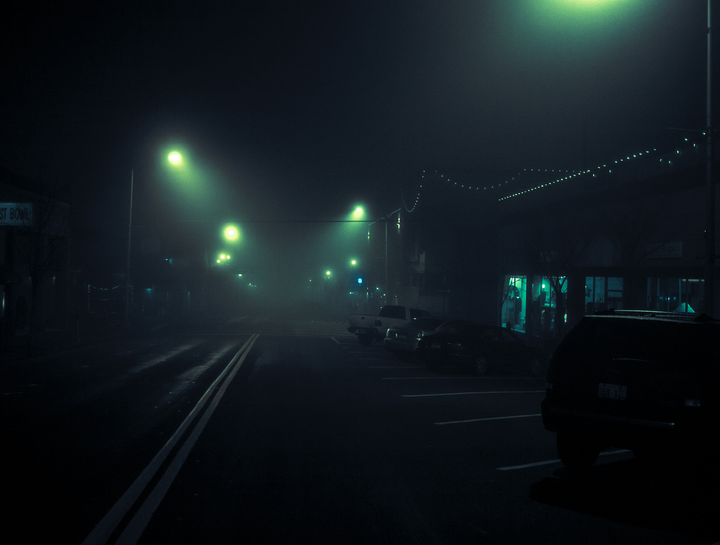“911. What’s your emergency?”
“My boyfriend shot himself in the head.”
It’s 2:52 a.m. on Feb. 6, 2021, and I’m petting his thigh and holding his limp hand when three police cars arrive, no ambulance. He’s the love of my life.
“Where’s the gun?” It hit me that they weren’t going to try to save him and they hadn’t even looked at his body yet. “Um, in the truck probably?” I responded. He was 31. We’d been in love only 1,564 days.
Gun suicide accounted for 60% of all gun deaths in 2017, more common than mass shooters, homicides, or self-defense shootings combined. In 2020, the percentage was about the same.
When a loved one dies by suicide, it’s common for mourners to blame other people or themselves, and struggle to understand “why they did it.” I don’t hypothesize the “whys” or “hows”: We talked many times about why life was painful for him, and he didn’t believe anything would change to allow for healing. Brian’s death is the most painful thing I’ve ever felt, but it was not shocking. (To protect the privacy of his family and friends, I’m not using Brian’s real name.)
A mental health crisis existed before the COVID-19 pandemic resulted in 590,000 deaths in the U.S. thus far and 29% of those unemployed this spring having been jobless for at least a year, but the mismanagement of a pandemic compounded stressors that led many people to die by suicide.
I know what needs to change to prevent more suicides, because Brian regularly told me what he needed to try to save his life and feel better: living labor wages and affordable resources to heal his existing trauma. And hope for a better planet.
When 2020 arrived, many people’s circumstances worsened.
Like many Americans, Brian had been battered as a child. Child development experts agree that any amount of physical “discipline” of children often results in cognitive, social and emotional problems. He suffered more than occasional spankings.
“I don’t have any memories before the age of 9,” he said sometimes. His journals echoed the same stories, and attributed that abuse to his adult experiences of self-loathing and uncontrollable trauma responses in his body and mind.
After leaving his parent’s homes by the age of 16, Brian had found community and catharsis in punk music as a lyricist and frontman, and as a film photographer and meme-maker.
He was 26 when we started seeing each other, and he said he was the happiest he could ever remember in his entire life. The feeling was mutual, and we were best friends, partners and lovers. He was a friend to my daughter and her dad; he was our family. I’d pour coffee in his mug and he’d quietly doodle in black ink on hardbound notebooks at the kitchen table. He found it therapeutic to draw out his nightmares.
Like many Americans with complex post-traumatic stress disorder from child abuse or wartime violence, domestic instability or sexual assault, his body and brain was dysregulated, and his life was full of insomnia, nightmares, chronic pains, depression and anxiety.
From our first date on Oct. 26, 2016, until the Feb. 5, 2021, morning before he died, Brian very specifically and regularly talked to me and his close friends about his untreated trauma history, his inability to find affordable, shame-free help and resources, and his fears about the future of the planet and human suffering on grand scales: pollution, increasing poverty due to inflation and low living wages, police brutality, high-tech government surveillance.
He told me throughout the entirety of our relationship why being alive felt painful and why he was afraid to grow old in America.
By the age of 27 and at my urging, he had finally sought talk therapy, which he seemed to like, until his therapist changed offices and raised his cost. Brian’s jobs rarely offered insurance options, and he couldn’t afford to pay for it himself. “I guess I’m done with therapy,” he said. Like many people living with complex PTSD, medication did not work for him.
Brian tried to self-soothe and make it through each day with caffeine, nicotine, alcohol and energy drinks. When he died at 31, he’d suffered chronic pains from doing hard labor for years. I felt and saw the knots in his back and feet and the twists in his spine, which he tried to manage with stretching, ibuprofen, and the massages I lovingly doled out.
He woke up in pain every day, and couldn’t afford physical therapy as it would have been prescribed to him. He was afraid of getting older and his pain getting worse. Doctors usually prescribe addicting opiates instead of affordable physical therapy or holistic treatments, and he didn’t want to be one of the millions of Americans addicted to pain pills.
Once COVID struck and the Trump administration refused to create infrastructure to manage the pandemic, Bryan lost his bartending and kitchen manager job due to closures. His student loans didn’t stop, and he didn’t qualify for unemployment due to bureaucratic loopholes.
Being poor had always been a source of stress and discomfort to him, but after the pandemic started I watched my lover’s mental and physical health deteriorate, and he spoke of being trapped in a capitalist dystopia.
His savings was eaten up by bills. More of our friends stayed in abusive or unsafe living situations because they couldn’t afford to move. Other folks lost family and relatives to the virus. Other countries sent their at-risk citizens funding to survive and mandated cohesive mask and distancing policies; Americans like Brian received $1,800 in six months while elected leaders openly scoffed at health experts.
Survival is stressful. His existing issues got worse, and new issues appeared. Our libidos decreased; his insomnia and nightmares increased. Stomach issues, digestion and keeping food down was difficult, and we both lost weight on our slender frames.
His last dated journal entry read, “Eleven months of under-employment, everything lost, nothing gained.” Jan. 31, 2021. When he died, he owed $18,000 in college debt and had a few hundred dollars in his checking account.
If hourly wages had increased with inflation, minimum wage workers would be earning $24 an hour today and could afford things like food, medicine and transportation. But wages did not increase, and this is why more Americans are living on the streets each year, or dying from unaddressed medical needs. Like many Americans, Brian worked at least 40 hours a week for half of his life and typically received minimum wage as payment.
“I need money,” he would say. “I can’t afford to go to the doctor, or the dentist. I can’t afford to fix my truck. I can’t afford therapy, and I can’t afford insurance. I can’t afford to do any of my hobbies.”
The morning before he died, he told me again that these things would never change. “This pandemic will go on another year, openings and closures, just watch.” Aging looks bleak when you’re young and have been told “these are the best years of your life” and it’s actually been hellish.
We lived together and I tried to help, when he’d let me. “You have enough to worry about,” he would say. Like many depressed people who have been abused, he felt like a burden and felt guilty for expressing his emotional pain.
“What was your last day together like?” folks have asked me. It was very normal. I didn’t know he would die that day and I don’t think he did either.
“Good morning, handsome,” I whispered as I brought him coffee, like every day preceding it.
“Good morning, beautiful,” he whispered back, and sniffed due to allergies.
Brian did dishes and vacuumed, changed a fluorescent bulb, fretted over news articles, and asked if I wanted to watch a movie on the couch after we both finished work in the evening. Instead we visited a pandemic-pod friend’s house on a whim and did shots of whiskey for two hours.
Alcohol is a depressant and regular consumption of it usually makes depression worse. Anybody who has worked in bars or grown up with alcoholics knows that heavy drinking can lead to emotional people who can’t be reasoned with.
And on this night, at this time, Brian suddenly became paranoid that I was mad at him, that his friends were mad at him. I’d seen this before and believed it was a byproduct of his low self-esteem, due to his childhood.
I assured him to sleep it off, nobody was mad at him, I loved him and we’d talk in the morning, everything was fine. He was slurring his speech and repeating himself and I realized he was the drunkest I’d ever seen him.
We got home and I remember how patiently and quietly he waited behind me in the garage as I unzipped my boots and kicked them aside. I went to the kitchen and heated up leftover macaroni while I heard him rummaging through our bedroom drawer. I now believe he was looking for the gun he’d purchased two months prior “for self-defense.”
He ambled out the front door, where I figured he was having a cigarette. It was 2:49 a.m. and he called the friend we’d been with, asking if anyone was mad at him.
“Love ya, man. It’s all good. See ya tomorrow,” he was assured.
But it didn’t matter. It was 2:51 a.m. when he hung up, sat in his truck, lit a cigarette, and shot himself in the left temple.
I heard the shot from the kitchen, ran out to the driveway, and heard him gasping his last breaths. The 911 operator must have heard me telling him that he was a good man, that I loved him, that I was sorry, that help was coming, that I wasn’t mad at him.
Now that I’ve learned that suicide-by-gun is the most common type of gun-related death, I better understand the decorum of the cops who processed the scene. I stood in my yard as close as they would allow me, near his body for two hours while they photographed, measured and collected evidence.
I shivered, dry-heaved, cried softly, and tried to not absorb the sounds of chuckling and small talk among the cops, like it was just another suicide at 3 a.m., or a barbecue. “Wow I’ve never seen a bullet do that before!” “Are those hops growing in your yard?”
Two officers offered to call Brian’s next of kin and inform them of his death so I didn’t have to. I gave them a phone number, their names and the towns where his parents lived.
“I’ll try to get to it before my shift ends at 6:30,” said one. They didn’t call. When I hadn’t heard from his blood relatives by that next afternoon, I picked up my cellphone and had to tell his mother myself.
Like most chronically depressed people, Brian didn’t want to die and he didn’t anticipate how his death would traumatize his loved ones: me, my daughter, his friends and co-workers who loved him. He wanted to get better but he didn’t have the tools or social support.
After he died, I found vintage rings he’d been hiding. “He wanted to marry you so hard,” his friends told me. He wanted to start playing music again, and get back to bartending and photography. We had plans to fill his truck bed with plastic bags and make a pool in the summer. He’d repainted his skateboard that week.
Suicides will continue to happen on a massive scale until there is direct action to heal people, help us survive and fund our rehabilitation. Brian hated it when people offered “thoughts and prayers” to death and destruction: He was a fan of direct action.
Individually and collectively we must lobby and fight for realistic living wages, and affordable and accessible trauma-management tools. Trauma researchers know that different types of therapies work for different people: eye movement desensitization and reprocessing therapy and sensorimotor therapy is recommended for war veterans and survivors of childhood and domestic abuse when medication has failed to help them, but at this time about half of war veterans with PTSD take medication as their main form of “treatment,” even though some medications are barely more effective than placebos.
Poverty has been demonized as laziness or a moral failing, and suffering in silence is what some men are told is “strength,” until they explode on other people, or themselves.
Our government could afford to fund advocates who call their patients and remind them to take their medication or stretch or cry or eat or get some fresh air. Our government could have sent personal protective equipment to low-income housing and greater-risk areas when this pandemic started 15 months ago. Our government could fund PSAs on TV and social media, advertising therapy and mediation opportunities in every city. Our police budgets could afford to reinvest in their communities. Our government could afford to train social workers to disrupt generational cycles of violence in the home and teach accountability for people who are re-enacting the violence that was normalized to them as kids.
Our society can still do these things.
I couldn’t save Brian because he wasn’t able to love himself the way we loved him, and because the structural and social support wasn’t attainable for either of us. It’s too late for him, but it’s not too late for everyone else.
Do you have a compelling personal story you’d like to see published on HuffPost? Find out what we’re looking for here and send us a pitch!
If you or someone you know needs help, call 1-800-273-8255 for the National Suicide Prevention Lifeline. You can also text HOME to 741-741 for free, 24-hour support from the Crisis Text Line. Outside of the U.S., please visit the International Association for Suicide Prevention for a database of resources.
Related
Trending
Source: Read Full Article










